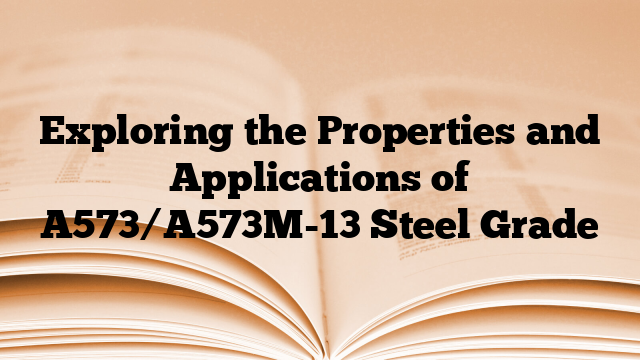The A573/A573M-13 steel grade is a standard specification for structural carbon steel plates of improved toughness. It is applicable to welded structures and is commonly used in the construction of bridges, buildings, and other structures.
The chemical composition of A573/A573M-13 steel grade includes carbon, manganese, phosphorus, sulfur, silicon, and copper. The maximum carbon content is 0.26%, which ensures good weldability and formability of the steel. Manganese content ranges from 0.85 to 1.20%, providing increased strength and hardenability. Phosphorus and sulfur contents are limited to ensure good machinability and prevent brittleness. Silicon and copper are present in small amounts and help improve the steel’s corrosion resistance.
In terms of mechanical properties, A573/A573M-13 steel grade has a minimum yield strength of 220 MPa and a minimum tensile strength of 400-490 MPa. It also has a minimum elongation of 21% in 2 inches, which signifies its good ductility and formability. The steel grade undergoes Charpy V-notch impact testing to determine its toughness and ability to withstand impact loads.
The A573/A573M-13 steel grade is commonly used in the construction industry for applications that require structural strength and toughness. It is often used in bridge construction, where its high strength and toughness make it suitable for withstanding heavy loads and harsh environmental conditions. It is also used in the fabrication of buildings and other structures that require durability and resistance to corrosion.
In summary, the A573/A573M-13 steel grade is a versatile and reliable material that exhibits excellent mechanical properties and is suitable for various structural applications. Its chemical composition and mechanical properties provide the necessary strength, toughness, and formability required for construction projects.

